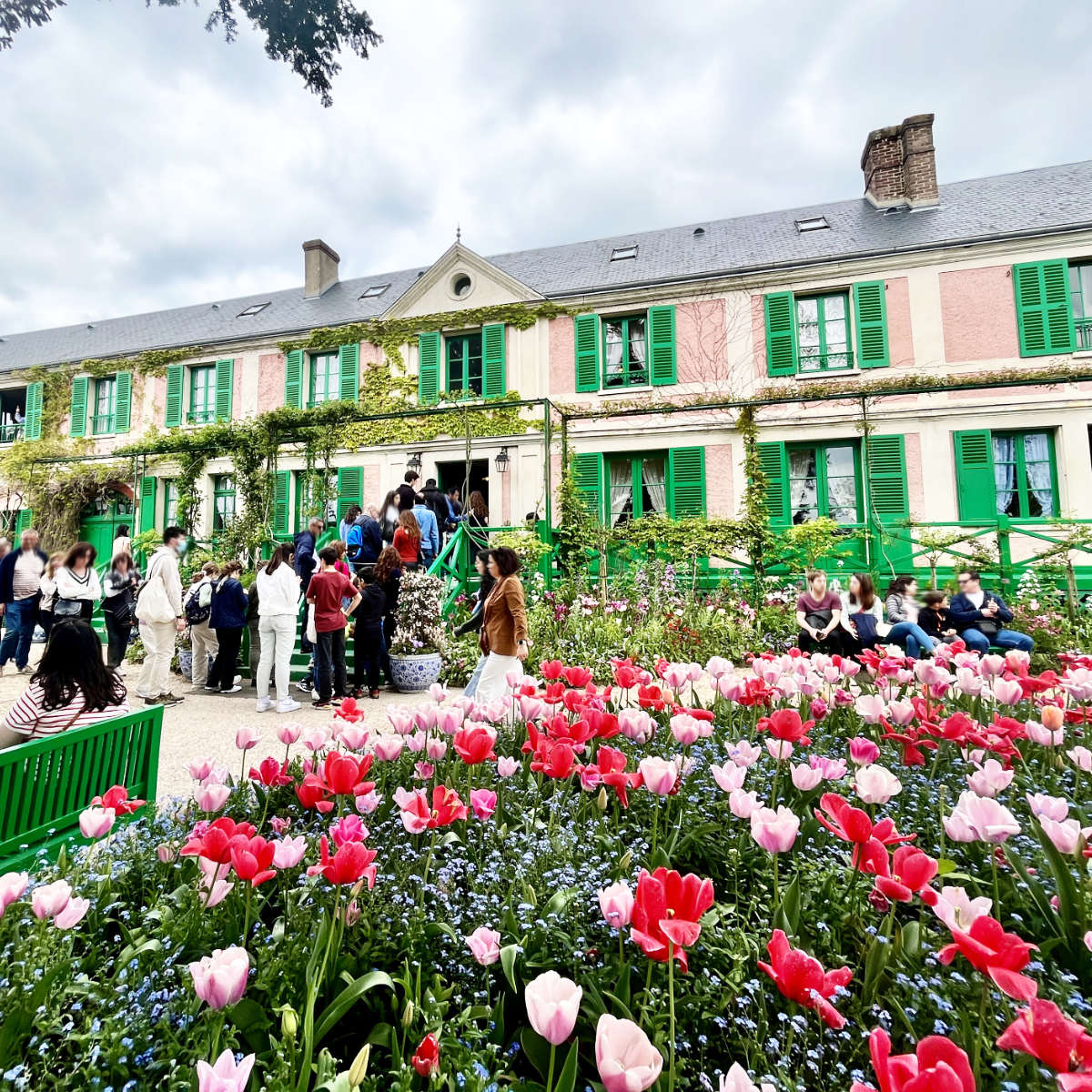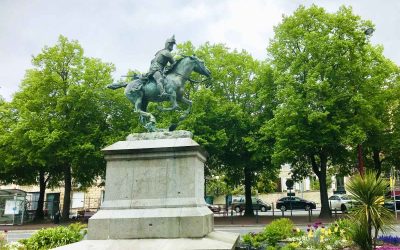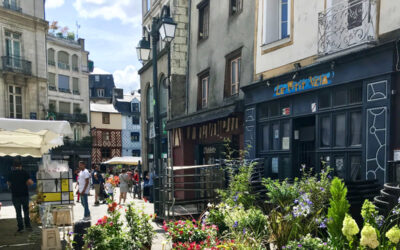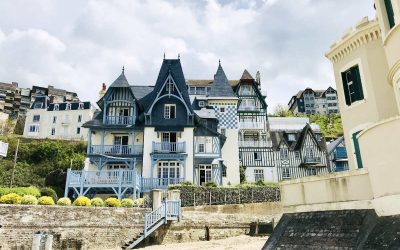If you are a fan of art and nature, you are going to love the small village of Giverny. It is this little corner of Normandy that one of France’s most famous artists, Claude Monet called home. And best of all, it is a short and picturesque day trip from Paris.
Monet lived in Giverny for over 43 years, deriving a lot of inspiration for his numerous paintings from the surrounding countryside. Among his most famous paintings were his “Waterlilies” series that were directly in his garden at Giverny.
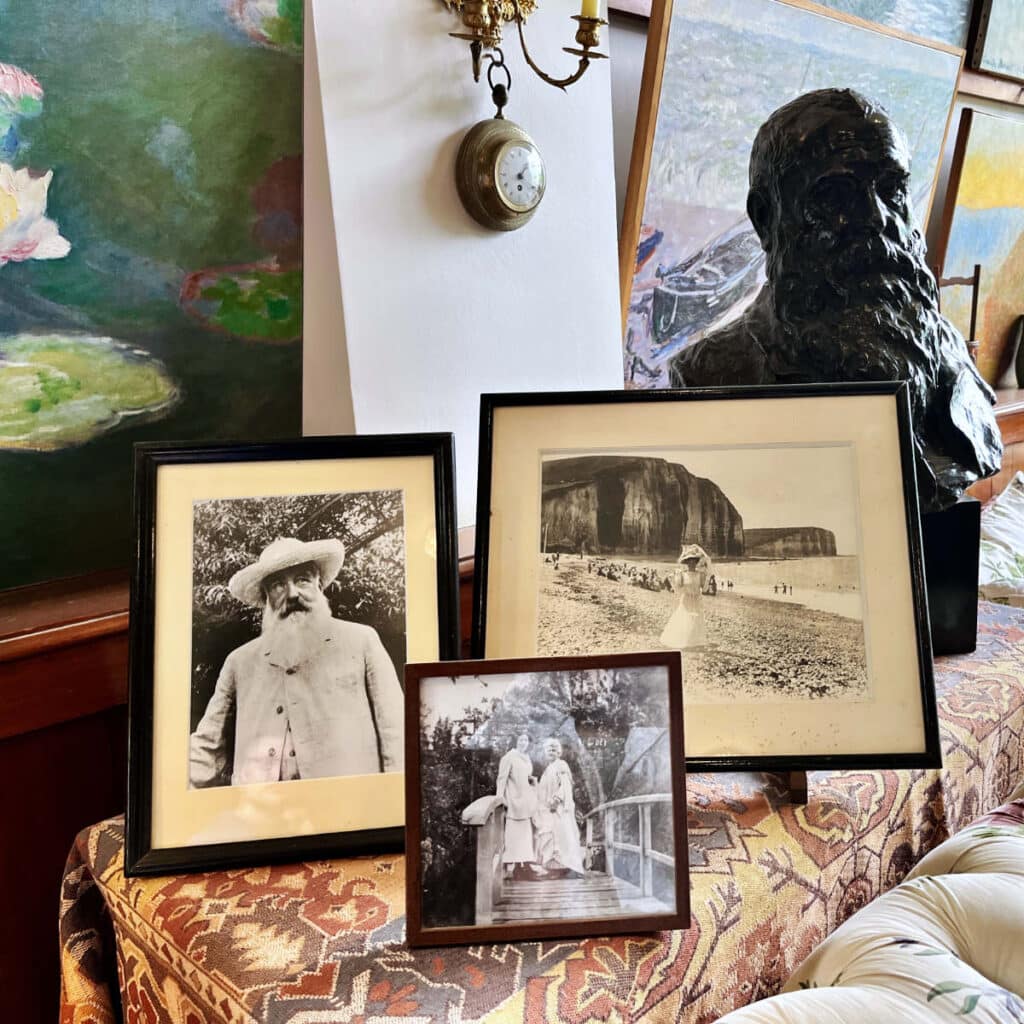
Those gardens are still in bloom today, managed by the Claude Monet foundation’s world-renowned gardeners. So if you are ready for a trip into the heart of Monet’s home and the bucolic French countryside, let’s head to Giverny, shall we? Allons-y!
Getting to Giverny
Giverny is located about 40 miles northwest of Paris and can be reached in around 50 minutes by car.
By train, you can take a local TER train from Gare Saint Lazare in Paris to the town of Vernon and then take a shuttle bus or taxi to Giverny. You can also take a guided tour to Giverny (which has the added benefit of letting you skip the line. Because it does get crowded!)
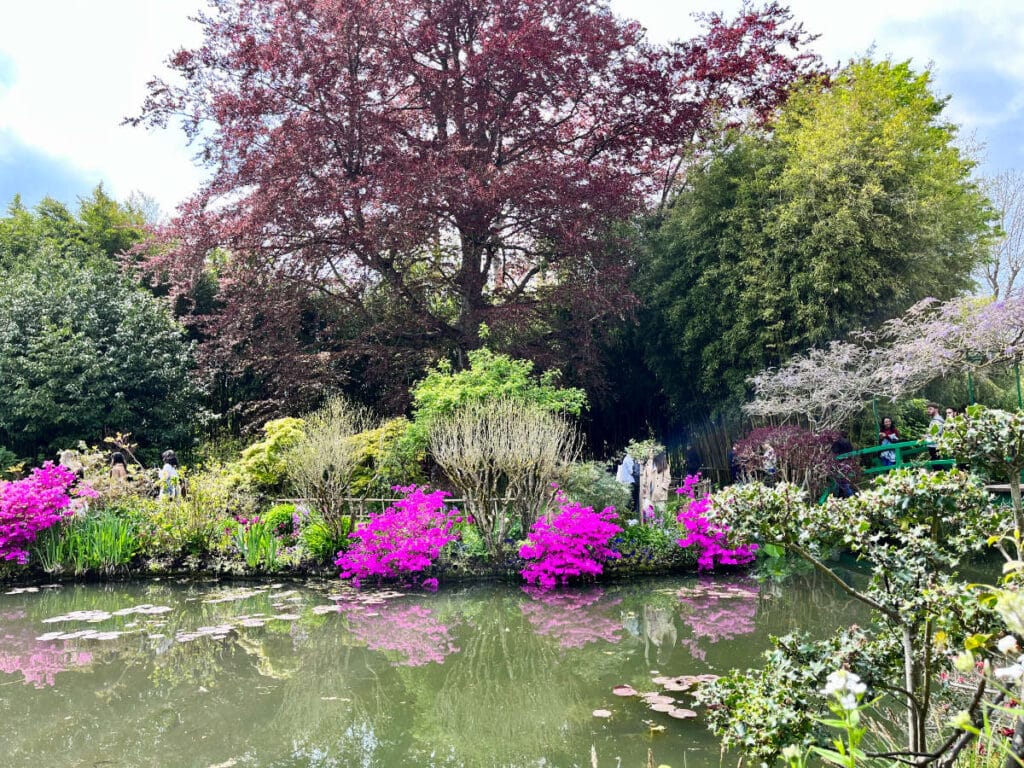
Best time to visit
The best time to visit Giverny is from April to October, when the gardens are in full bloom and the weather is pleasant enough to enjoy a stroll outside. The peak season is from May to September, so expect larger crowds during those months.
While the gardens are large enough to accommodate the crowds, Monet’s family home is rather small with narrow corridors and staircases. I went at the end of April, and there were quite a number of tour groups and visitors.
The gardens are closed in the winter months, so I’m afraid you cannot plan a visit to Giverny outside the tourist season (hors saison).
Things to see in Giverny
1. Monet Foundation
Your first stop after arriving in Giverny should be the Monet Foundation which manages Monet’s former home. If you haven’t purchased your timed tickets online already, you will want to cue up to get them. (I highly recommend buying tickets in advance.)
The foundation also provides audio guides in multiple languages to help you navigate the property.
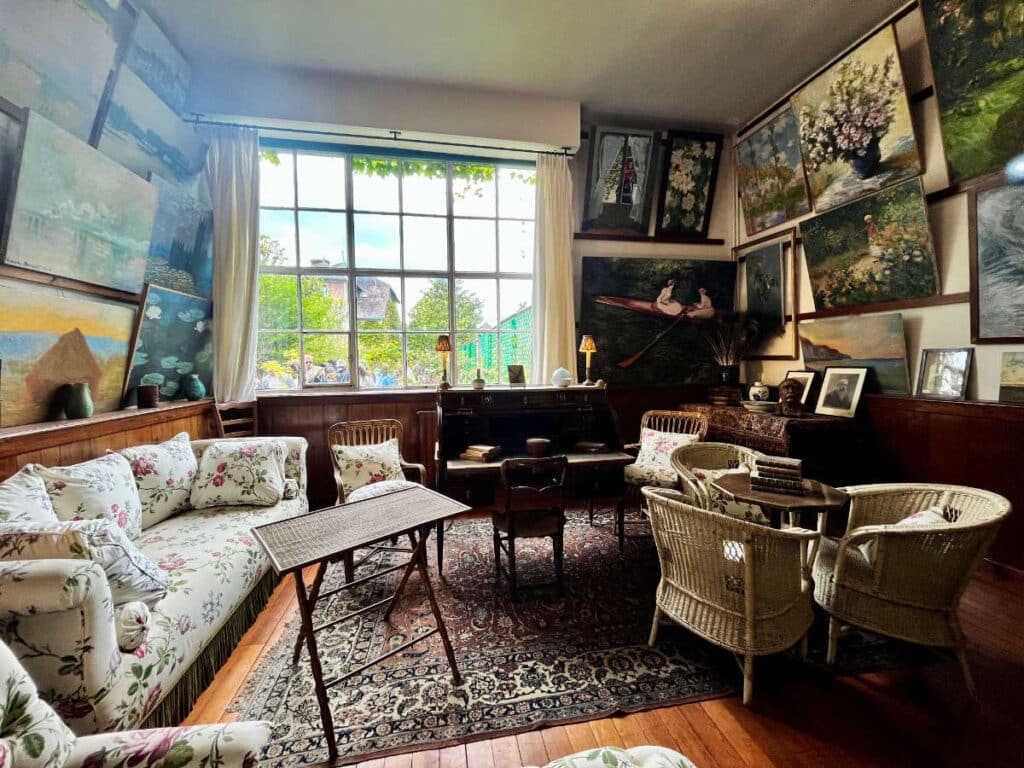
Monet initially rented this house in Giverny in 1883, eventually purchasing it in 1890 as his fame and fortune grew. Towards the end of his life, he was already one of the most famous artists in France.
Inside the house, you can see his large light-filled studio which is filled with paintings. The paintings are reproductions as Monet’s works are now highly sought after and worth millions.
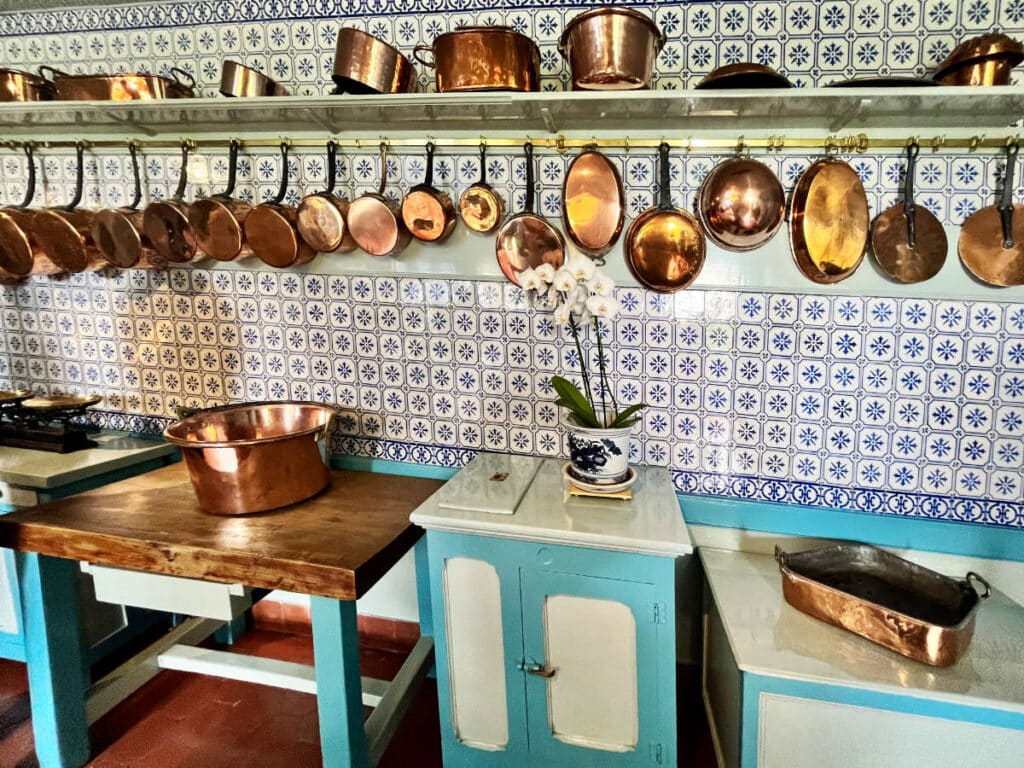
All throughout the house, there are paintings not only by Monet but all his famous friends like Degas, Signac, and Cezanne. They often exchanged paintings and gave gifts within this rarified circle.
You can also visit his living room, bedrooms, and kitchen areas which have all been preserved as it might have looked in his day.
2. Gardens and Waterlilies
The real highlight of the Monet Foundation is, of course, the gardens. There are two main gardens, divided by a road in the middle and a small passage linking the two. The garden directly in front of the house which is known as the Clos Normand.
i) The Clos Normand garden
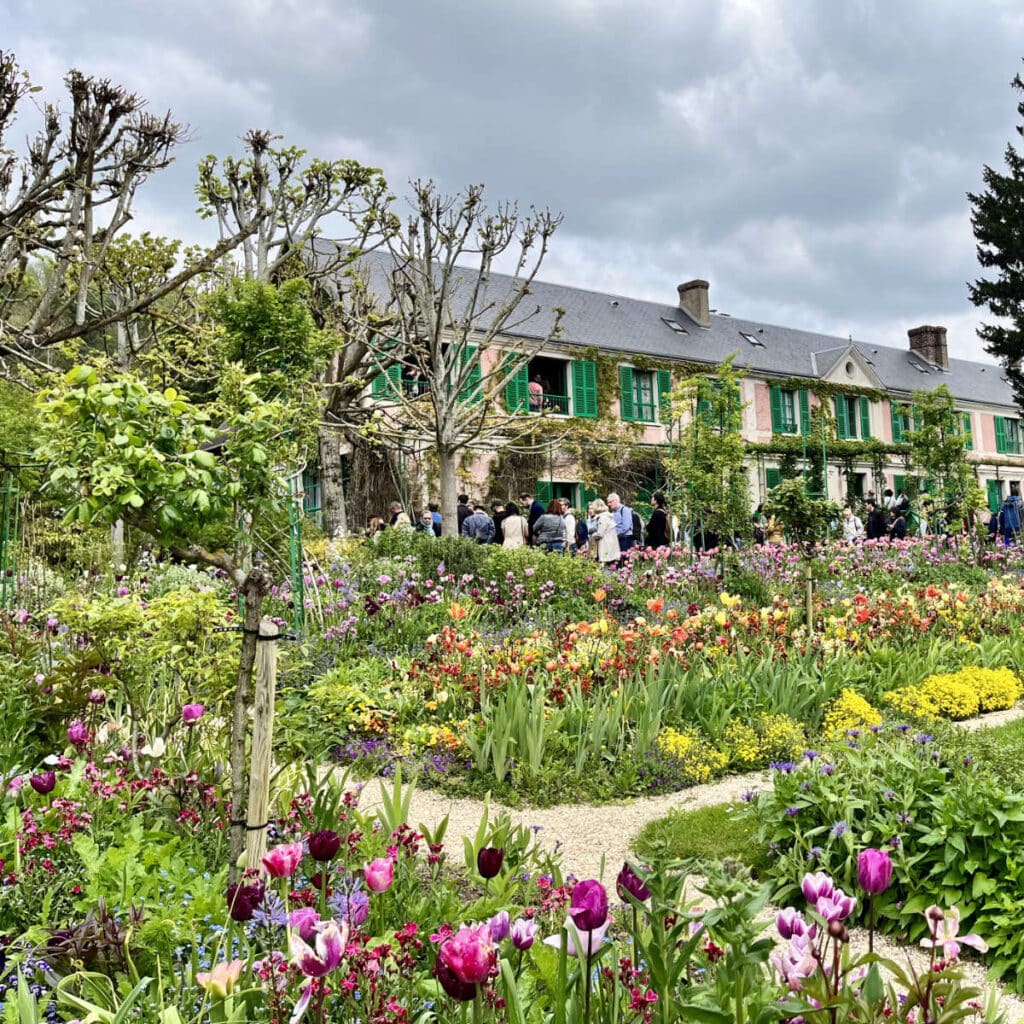
The Clos Normand gardens are a French-style garden with flowers neatly planted and arranged in rows. It is a garden planted in symmetry, with the colors of the flowers carefully coordinated.
When in season, the flowers bloom to perfection, making a perfect backdrop for photos and souvenirs.
ii) The water garden
The water garden is located on the other side of the road that is accessible via a small underground tunnel that crosses a road above.
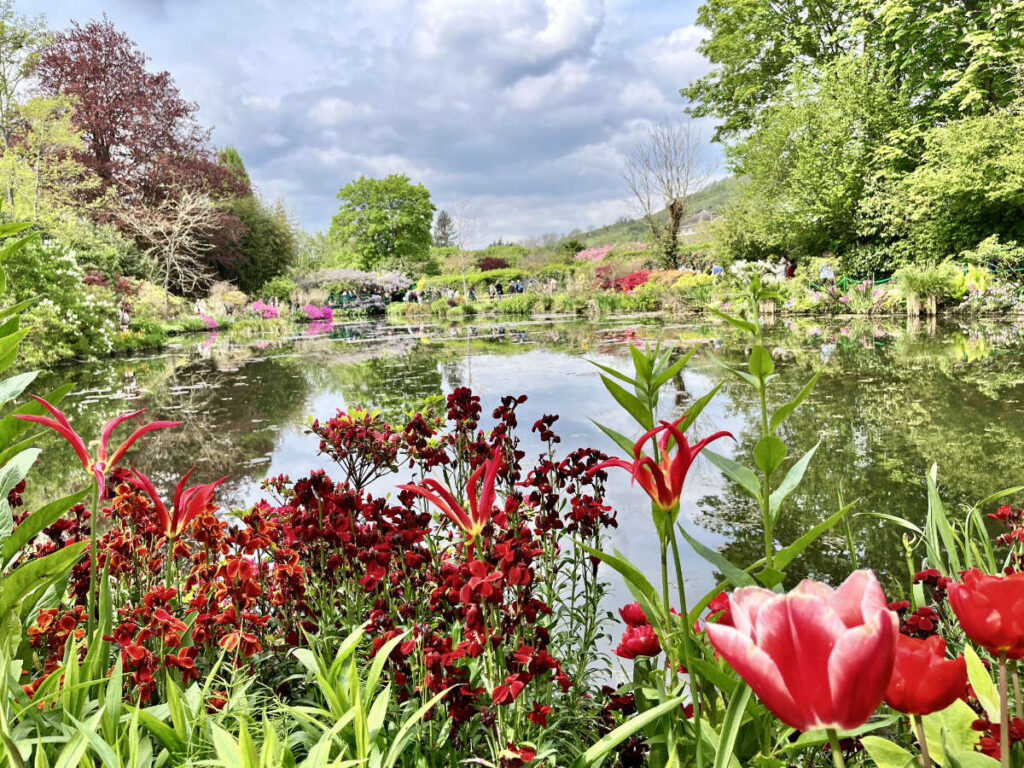
Monet purchased the parcel of land next to his home on the other side of the railway in 1893, ten years after arriving in Giverny. Nearby was a little stream called the Ru, a branch of the Epte (Seine River tributary).
Monet arranged for it to be diverted into his property to create a pond in his water garden, to the objection of his neighbors. But such was his fame, Monet overcame their objections and constructed this scenic paradise.
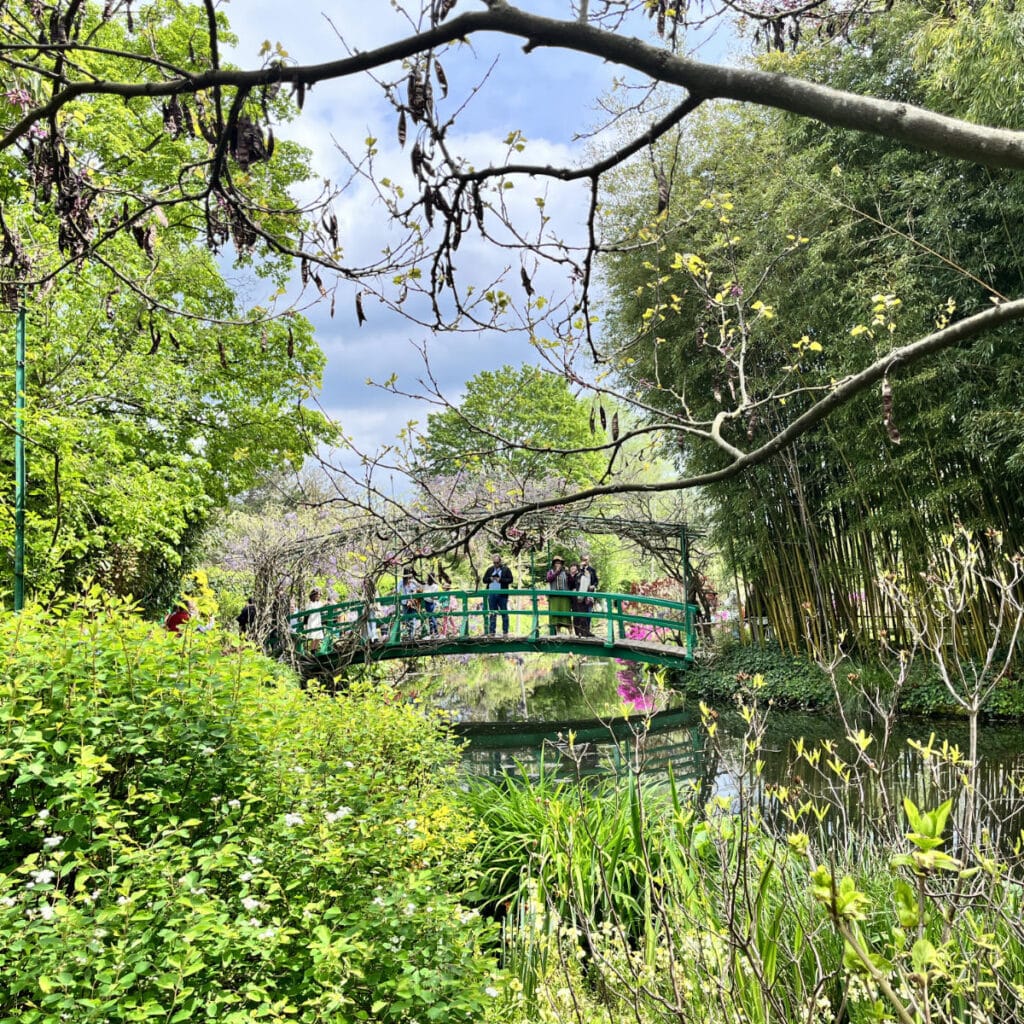
The pond would eventually grow to its current size. Inspired by the Japanese gardens that Monet was familiar with, he created the water lily pond along with the the iconic green Japanese bridge, which is the subject of one of Monet’s most famous paintings.
Monet painted several large paintings of the water lilies, known as the Les Nymphéas. You can find several of his waterliles artworks at Musée d’Orsay and the Musée de l’Orangerie in Paris which has entire rooms dedicated to Claude Monet.
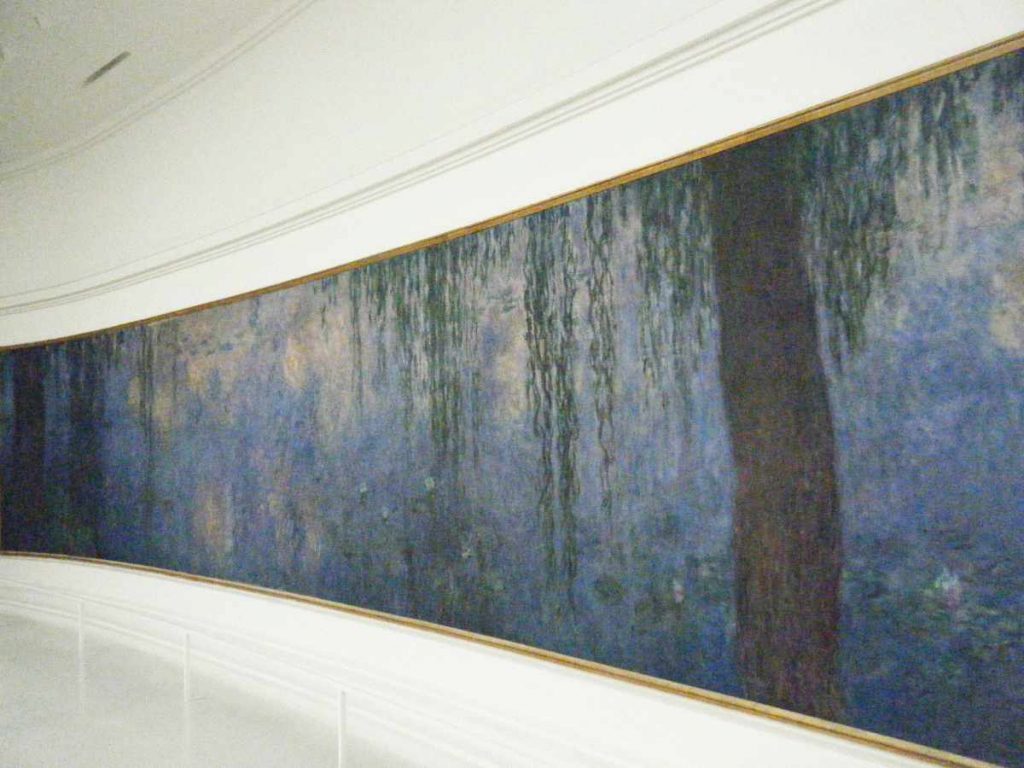
After Monet’s death in 1926, the house and gardens in Giverny were inherited by his son Michel Monet. However, it was his stepdaughter (and daughter-in-law) Blanche, who maintained it until her own death in 1947.
WWII was not kind to the gardens however, with Giverny occupied by the Germans. Eventually, Monet’s son Michel left the property to the Academie des Beaux-Arts upon his own death in 1966.
Upon the creation of the Monet foundation, the property and gardens were greatly restored, with the help of André Devillers who had previously accompanied master-gardener Georges Truffaut, a contemporary of Claude Monet.
Devillers would help restore the gardens to how it would have resembled under Monet and Truffaut, and how they look today.
3. Museum of Impressionism
If you’re interested in learning more about the Impressionist movement, check out the Museum of Impressionism, which is located just footsteps away from the Monet Foundation.
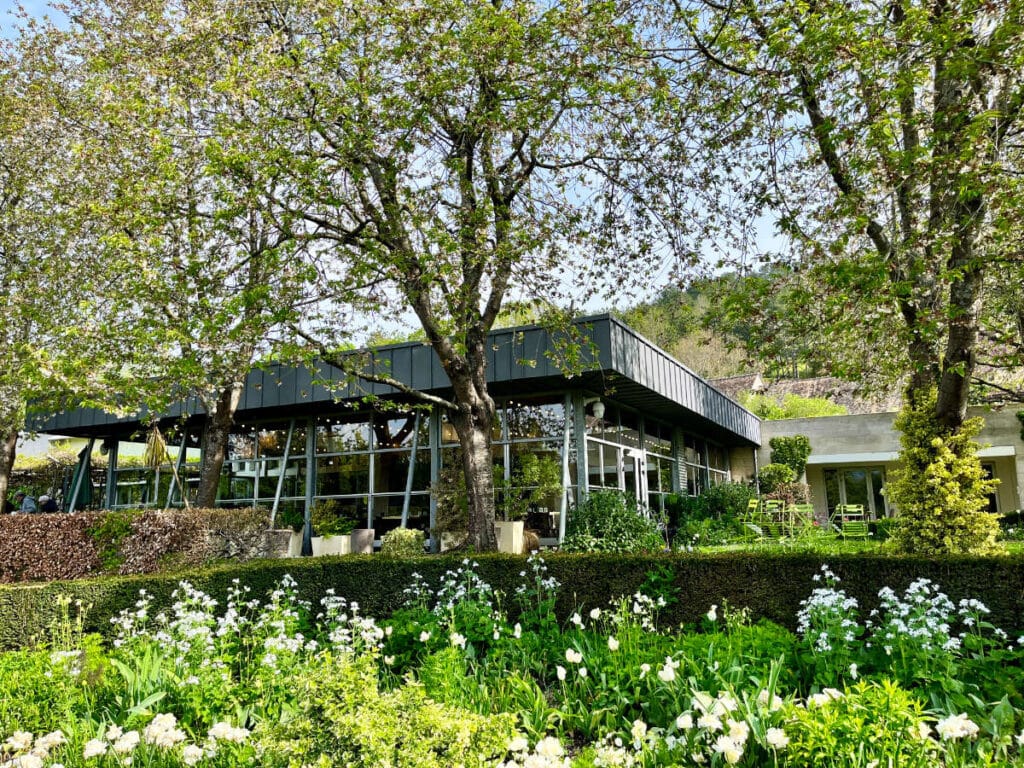
The museum has sketches and a collection of paintings by Monet and his contemporaries, as well as temporary exhibitions that explore different aspects of Impressionism.
It also has a beautiful cafe and gardens that are a wonderful place to have a snack and watch the crowds.
4. Monet’s tomb at Saint-Radegonde Church
After exploring the gardens and museum, head over to the nearby Saint-Radegonde Church to visit Monet’s tomb. Portions of Saint-Radegonde church dates back to the 11th century, but much of it was constructed in the 15-17th centuries.
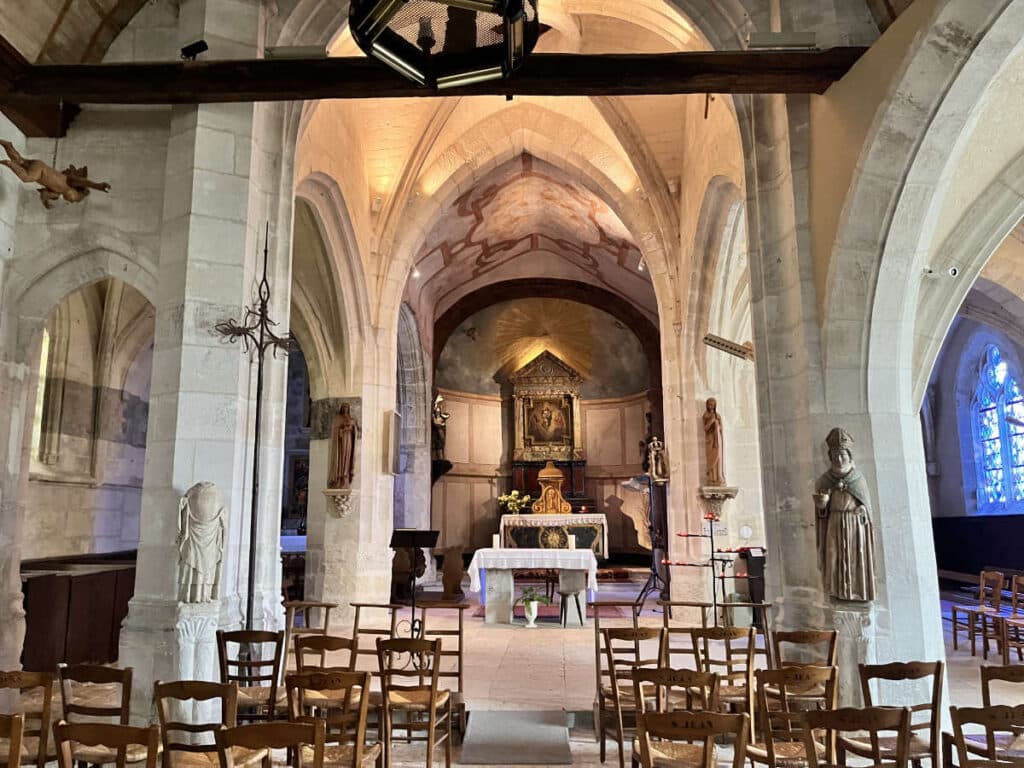
It is a small village church, built in a Romanesque origin. The cemetery behind the church has many graves, but it is on the side that a large monument is dedicated to Monet and members of his family.
5. Art Galleries and souvenirs
Several of Monet’s friends resided regularly at Giverny, attracted by the great artist. They lived in inns nearby, creating a bustling artist colony.
“The vast majority of artists to visit Giverny between 1887 and 1915 were American, but others came from Australia, Canada, Great Britain, Argentina, Austria, Germany, Poland, Norway and Sweden.”
– Impressionist Giverny: A Colony of Artists, 1885-1915
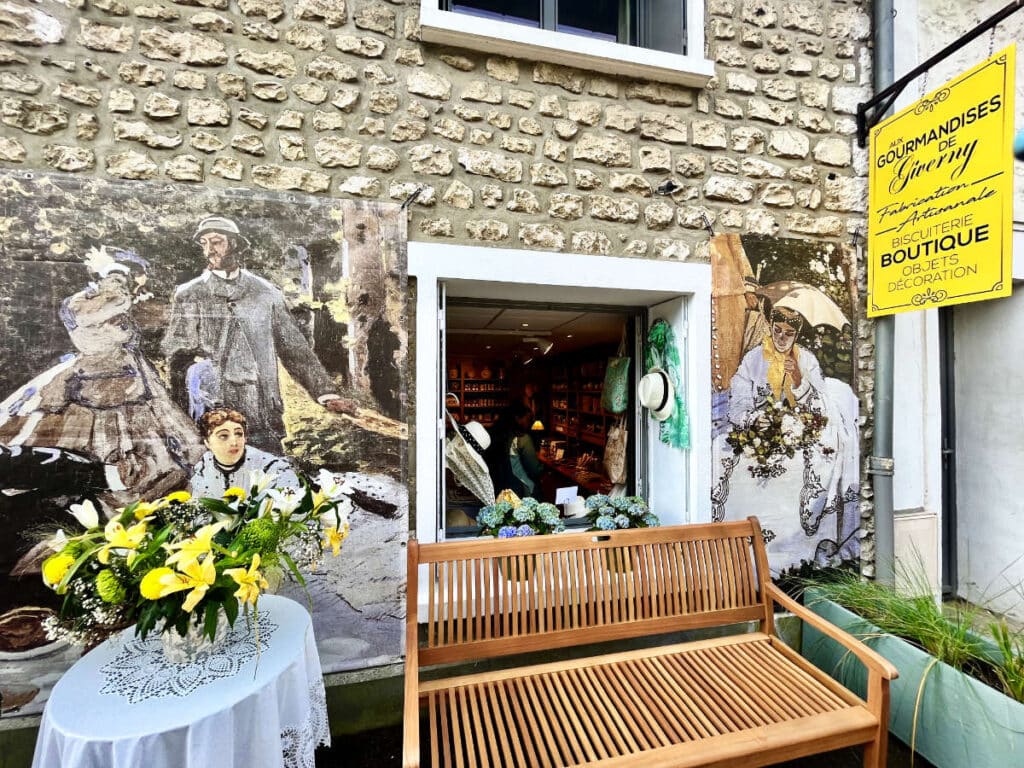
Today the village is still home to several artists who live and work in the area. If you’re looking to bring home a piece of Giverny, check out some of the art galleries and souvenir shops in the village. You’ll find everything from prints of Monet’s paintings to handmade ceramics and jewelry.
Where to eat: Restaurants in Giverny
There are several restaurants in Giverny that serve traditional French cuisine, as well as several cafés if you just want a snack.
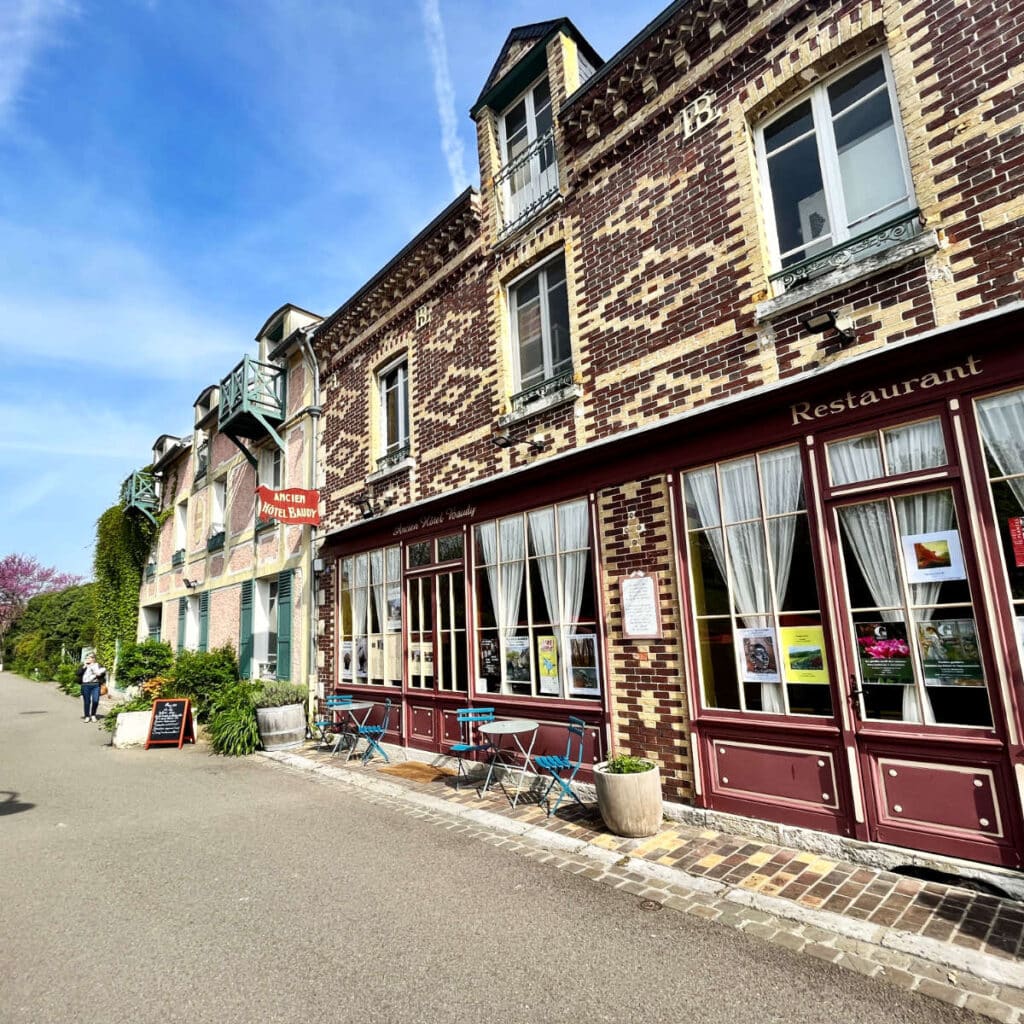
One popular dining spot is Les Nymphéas, which is named after Monet’s water lily paintings and offers a prix-fixe menu that changes with the seasons. Other options include La Guinguette and La Parenthèse, both of which have casual outdoor terraces.
All these restaurants are within a 5 minute walk of Claude Monet’s house. I should note however that you should plan at least an 1 1/2 hours for lunch, as French lunches usually starter, mains, and dessert, along with wine.
How easy is it getting around?
Getting around Giverny is fairly easy, as the village is small enough to explore on foot. There are several large free parking lots where you will be expected to leave your car.
If you want to travel further afield, you can also rent bicycles to explore the surrounding countryside.
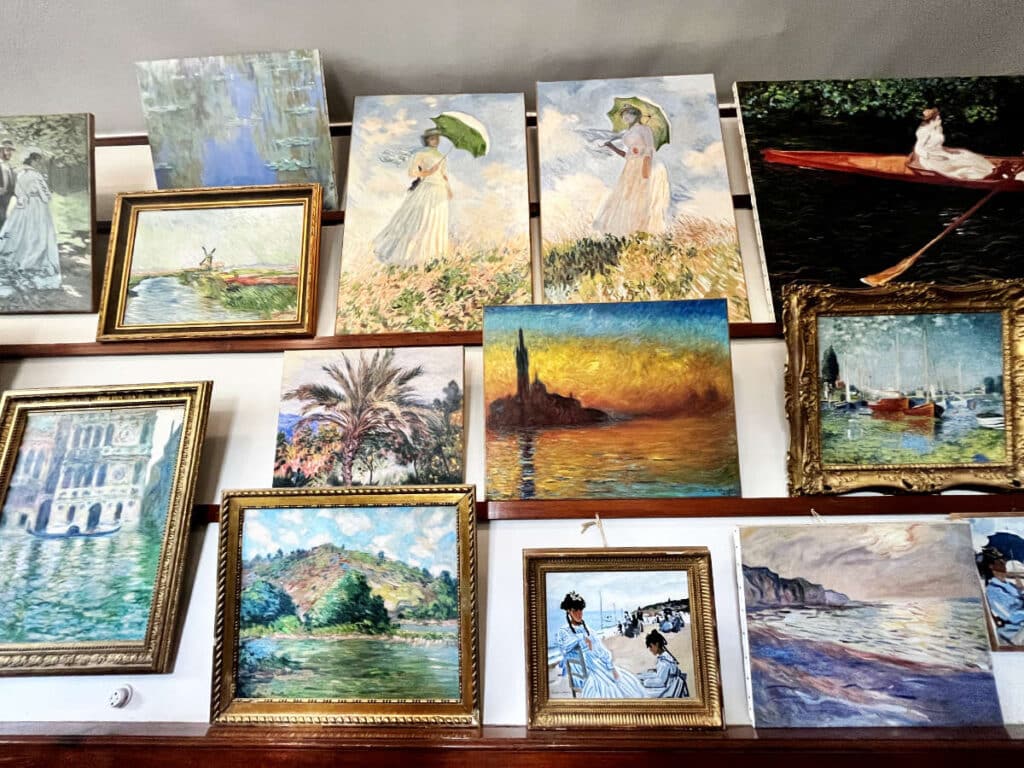
How long should you spend?
I recommend planning to spend at least a day in Giverny to fully appreciate the gardens and museum. Lines are long if you’ve not bought tickets in advance, and even then there is usually a line to enter Monet’s house.
If you have more time, you can explore the village and surrounding countryside or visit some of the nearby towns in Normandy like Rouen which is about an hour away.
Where should you stay?
If you’re looking to make a weekend out of your visit, there are several charming bed and breakfasts in Giverny and the surrounding area:
- €€€ – La Pluie de Roses
- €€€€ – La Dime de Giverny

If you enjoyed that article, you may like to read more about traveling around Normandy. A bientôt!
